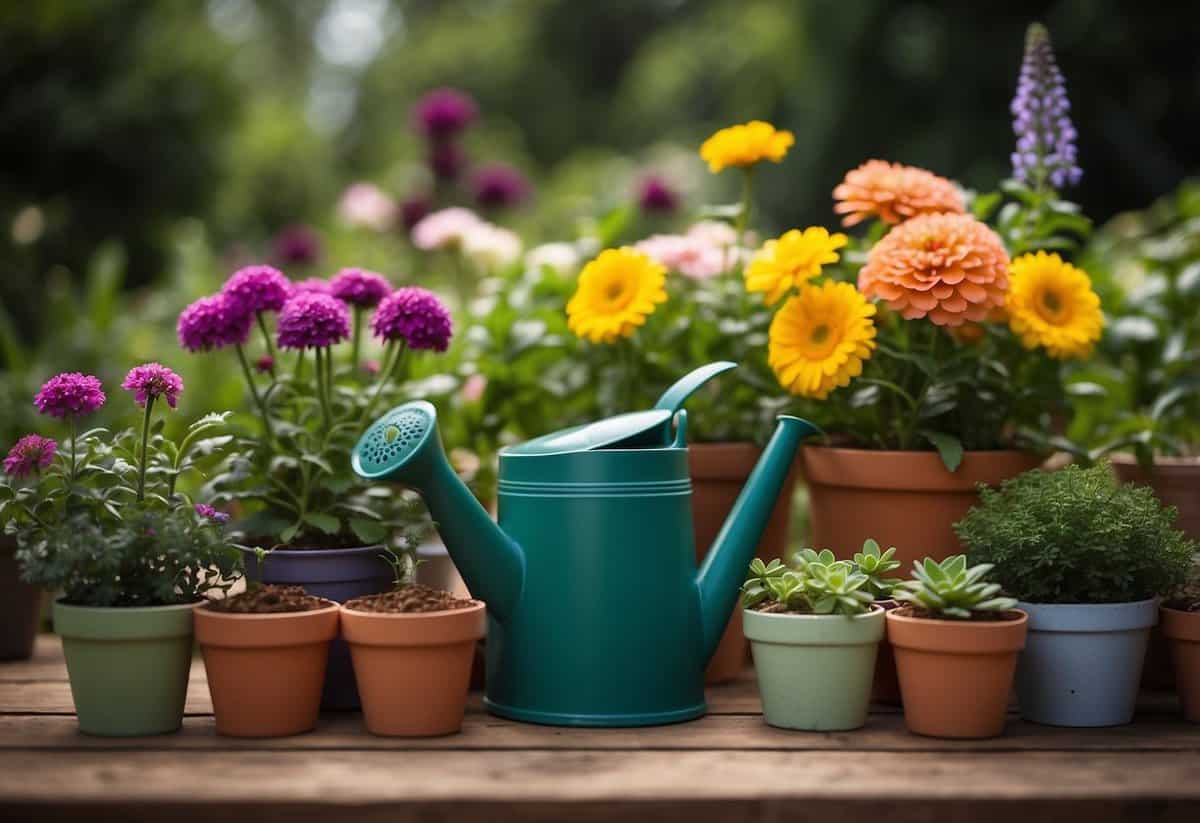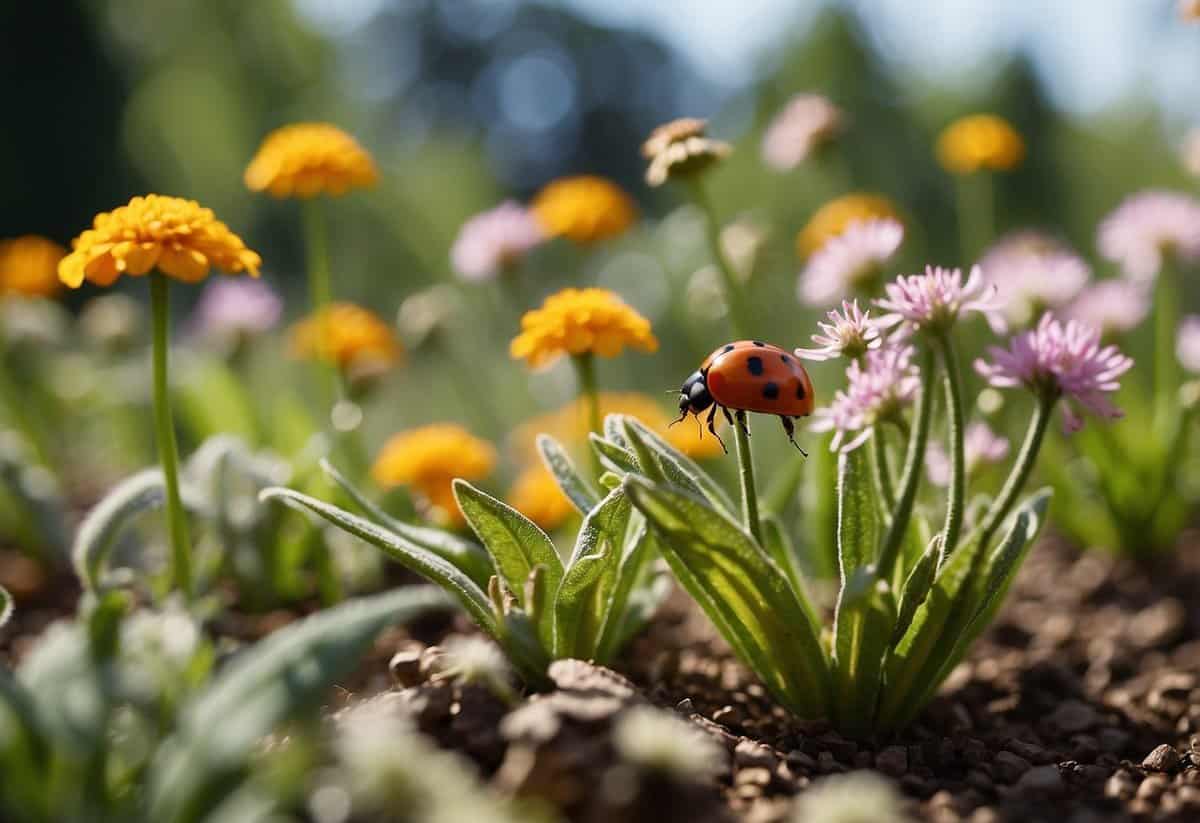Garden Tips for Beginners: Simple Steps to Start Growing
Starting a garden can be a rewarding experience, encouraging you to spend time outdoors and connect with nature. Whether you’re looking to grow vibrant flowers or delicious vegetables, taking the first steps can sometimes feel overwhelming. With the right tips and guidance, you can begin your gardening journey confidently and enjoy the fruits of your labor.

You don’t need an extensive background in gardening to create a beautiful and productive garden space. By focusing on simple, practical steps and learning a few key basics, you’ll quickly discover that gardening can be a fun and fulfilling hobby.
1) Choose the Right Plants

Start by picking plants that are easy to grow and suit your climate. You might want to try tomatoes, lettuce, or radishes. These are beginner-friendly and grow quickly.
Think about your garden’s sunlight. Some plants, like peppers and tomatoes, need a lot of sun. Others, like spinach, can do well in partial shade.
Consider the size of your garden space. If it’s small, opt for compact plants or try container gardening. Visit A Complete Beginner’s Guide to Starting a Garden for more details.
2) Prepare Your Soil

Clear out any rocks and debris from your garden area. Use a spade to cut the grass into small squares and remove it.
Next, loosen the soil. For new gardens, dig down at least 8 inches so plant roots can grow easily.
Add organic matter like compost or aged manure. This will provide nutrients and improve drainage. Water the soil well after adding these materials.
For best results, use a mix of potting soil and topsoil. This combination will help retain moisture and provide necessary nutrients.
3) Water Properly

Watering your garden the right way is key to healthy plants. It’s best to water early in the morning. This gives your plants a good start for the day and helps them handle the midday sun. Evening watering is also okay because it gives water time to soak into the soil overnight.
Use drip irrigation at the base of each plant to prevent fungus on the leaves and to reach roots directly. If the soil is dry an inch below the surface, it’s time to water.
For more information, check out how to water a vegetable garden the right way.
4) Learn About Pruning

Pruning helps your plants grow better and look nicer. It can also make them healthier by removing dead or diseased parts.
For soft, thin stems like herbs, use garden scissors. For live plant stems under 1/4 inch in diameter, try bypass pruners.
Prune shrubs after they bloom to control their size. For fruit trees, remove about a third of the branches each year. This promotes better fruit production.
For more tips on pruning, visit this guide and this article.
5) Use Companion Planting

Companion planting is a great way to boost your garden’s health. Certain plants grow better together. For example, tall plants like corn can provide shade for lettuce during hot summer days.
Plants like spinach and Swiss chard can thrive in the shadow of larger crops. This technique saves space and can help you get bigger harvests.
Make sure to check soil needs. Some plants require different pH levels and nutrients. Taking this into account can improve your garden’s growth. You can find more about it in this guide to companion planting. Happy gardening!
6) Start Composting

Composting is a great way to recycle kitchen scraps and yard waste into nutrient-rich soil. Begin by choosing a spot in your garden for a compost bin or tumbler.
Collect “green” materials like fruit peels and veggie scraps. Balance these with “brown” materials such as leaves and cardboard. Aim for about three times more browns than greens.
Keep the compost moist but not soggy. Turn the pile occasionally to help it break down faster. Before long, you’ll have your very own compost to enrich your garden. For more details, visit Epic Gardening.
7) Mulch Your Garden

Mulching is key to a healthy garden. It helps retain moisture, controls weeds, and enriches the soil.
Use organic mulches like wood chips, straw, or compost. They break down and feed the soil.
Avoid rocks as mulch. They might look nice, but they can heat up your soil, which isn’t good for plants.
8) Understand Pest Control

Keeping pests under control is key to a healthy garden. Start by checking your plants regularly for signs of bugs or disease. Look under leaves and around the base of plants for any pests.
Healthy plants are less likely to attract pests. Make sure your plants get the right amount of water and nutrients. Remove any diseased or dead leaves promptly.
Using natural methods can also help. Introducing beneficial insects, like ladybugs, can reduce pest populations. For more tips, visit Pest Control Tips for the Beginning Gardener.
9) Use Organic Fertilizers

Using organic fertilizers is a great way to nourish your garden. They come from natural sources like compost, manure, and bone meal.
Organic fertilizers improve soil health by adding essential nutrients. They also enhance soil structure and increase its ability to hold water.
Always read the package instructions carefully. This ensures you apply the correct amount and avoid over-fertilizing.
10) Rotate Crops Annually

Rotating your crops each year helps prevent soil problems. By moving your plants around, pests and diseases have a harder time finding their favorite hosts. This keeps your garden healthier.
Change the spots where you grow different vegetables. For example, plant tomatoes where you had beans last year. This simple step can help maintain soil fertility and improve plant growth.
Consider dividing your garden into sections. Each year, plant different crops in each section. This makes rotation easier to manage and keeps your soil rich in nutrients. Try it, and watch your garden thrive!
Choosing The Right Tools

To make gardening easier and more enjoyable, you need the right tools. This means selecting essential tools that fit your needs and budget.
Essential Gardening Tools
Start with a hand pruner. It’s great for pruning plants like rose bushes and herbs. A good recommendation is the Felco Pruning Shears, known for its sharp blades and durability. Next, invest in bypass pruners for regular pruning to help your plants grow back healthy and strong.
A spade is key for digging and planting. Its flat blade makes it perfect for edging and transplanting. Consider getting a garden fork as well, which is useful for loosening soil and digging up root crops.
Don’t forget a reliable watering can or garden sprayer to keep your plants hydrated. These tools make watering large garden beds easier.
Budget-Friendly Options
If you are on a budget, you can still find quality tools that won’t break the bank. Look for anvil-style loppers, like the Tabor Tools GG12 Anvil Lopper, which are perfect for cutting thicker branches. These stay sharp and can handle dry, woody growth.
A hand trowel is another affordable and versatile tool, essential for planting bulbs and small plants. For weeding, a basic hand weeder or garden hoe will do the job without costing much.
Check for deals on sites like Amazon where you can find discounted tools that are both durable and practical. Aim for tools that will last, offering value over time.
Understanding Soil Types

Knowing your soil type is essential for successful gardening. Different soil types have varying textures and characteristics, which affect plant growth, water retention, and nutrient availability.
Testing Your Soil
Start by performing a simple test to identify your soil type. Grab a handful of damp soil and squeeze it. Sandy soil will fall apart quickly. Clay soil feels sticky and holds its shape. Loamy soil easily forms a ball but crumbles with slight pressure.
You can also use a jar test. Fill a jar with water and soil, shake it, and let it settle. The layers that form will show the proportion of sand, silt, and clay. Identifying these percentages helps you understand your soil composition better.
Additionally, a pH test kit can measure soil acidity or alkalinity. This is important because pH affects nutrient availability for plants. Neutral soil pH (around 7) is often ideal, but some plants prefer more acidic or alkaline conditions.
Improving Soil Quality
Improving soil quality involves adding organic matter and minerals. For clay soils, mix in organic materials like compost or mulch to enhance drainage and prevent compaction. Sandy soils benefit from adding organic material to improve water retention and nutrient holding capacity.
Use amendments like lime to raise pH levels if your soil is too acidic, making it more suitable for many plants. Conversely, incorporate sulfur to lower pH levels if the soil is too alkaline.
Regularly adding compost boosts microbial activity and provides necessary nutrients. Mulching helps maintain moisture and temperature levels. These tips can make a huge difference in creating a healthy soil environment for your garden.
Plant Care Basics

Taking care of your plants involves the right watering techniques and regular pruning. These practices help your plants grow healthy and strong.
Watering Techniques
Water your plants deeply but infrequently. This encourages roots to grow deeper.
It’s best to water early in the morning when it’s cooler. This helps reduce water evaporation and allows plants to absorb moisture.
Use a soaker hose or drip irrigation system to deliver water directly to the roots. This is more efficient than sprinklers, which can waste water and encourage diseases.
Check the soil’s moisture level regularly. Stick your finger about an inch into the soil. If it feels dry, it’s time to water.
Avoid overwatering. Plants need oxygen at their roots, and too much water can suffocate them.
Pruning and Trimming
Pruning helps plants stay healthy by removing dead or diseased branches. Use clean, sharp tools to make clean cuts.
Trim back any overgrown areas to keep plants looking neat and prevent them from getting too crowded.
Prune fruit and vegetable plants to increase yield. Removing suckers and excess foliage allows the plant to focus energy on producing fruit.
Pruning at the right time is essential. For most plants, late winter or early spring is best. However, some plants like spring-flowering shrubs should be pruned right after they bloom.
Always make your cuts just above a leaf node or bud to encourage growth in the direction you want.







